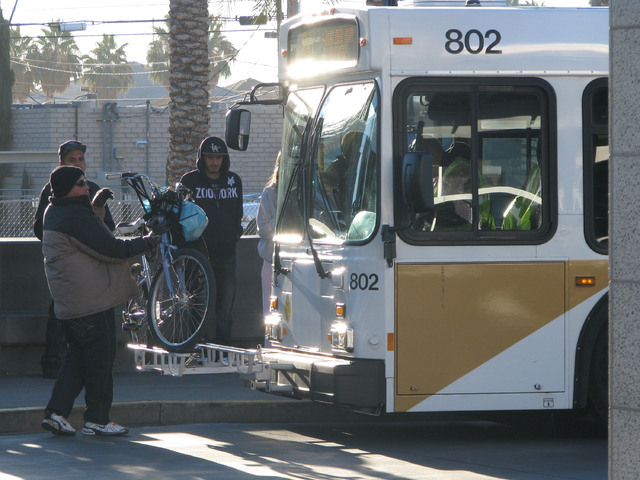Planners look at reducing lanes, adding mass transit on Maryland Parkway
Planners developing a regional plan for the Maryland Parkway corridor are leaning toward reducing the number of lanes from six to four and placing a mass-transit system along the center of the street.
Owners of businesses along the corridor concur that a center-running transit system would be the best catalyst for revitalizing the area because it would help link people’s homes with their jobs.
The Maryland Parkway Coalition, a group of business people along the five-mile strip between Charleston Boulevard and Russell Road, on Tuesday got one more look at details of a plan that will be shown to the public Thursday in a workshop meeting at the Boulevard Mall. The community meeting on the corridor begins at 6 p.m., at the center court of the mall in front of the J.C. Penney store.
Planners haven’t determined yet whether the transit system would be a light-rail line or a bus rapid transit.
That would likely be determined in two years after an environmental assessment is completed along the length of the corridor.
The Maryland Parkway plan is one of four being undertaken by Southern Nevada Strong, a planning coalition using the resources of 13 regional partners, including Clark County, the city of Las Vegas and the Regional Transportation Commission.
Southern Nevada Strong is funded by a $3.5 million grant from the U.S. Department of Housing and Urban Development. Undertaking the planning process will make studied areas eligible for federal funding to implement plans.
In addition to the Maryland Parkway corridor, Southern Nevada Strong is working on three other “opportunity sites” for redevelopment, downtown North Las Vegas, the Las Vegas Medical District off Charleston Boulevard, and on Boulder Highway near Broadbent Boulevard.
Jay Renkens, director of urban planning services for MIG, a Portland, Ore.-based consultant, gave details of prospective improvements along Maryland. Planners are considering widening sidewalks, adding landscaping and shade, integrating public art and park space near prospective transit stops.
Business people and planners are undecided about the need for pedestrian overpasses of Maryland and some of the busiest sections of the street.
Clark County Commissioner Chris Giunchigliani, who participated in the meeting, reminded participants they need to consider what neighborhoods will look like in several years. For example, she said pedestrian crossings over Maryland Parkway near UNLV might become more essential if an on-campus football stadium is built.
Renkens identified four intersections along Maryland prime for redevelopment. He listed intersections at Oakey Boulevard, Desert Inn Road, University Avenue and Tropicana Avenue as prime spots for development that could include housing, retail and mixed-use properties.






















